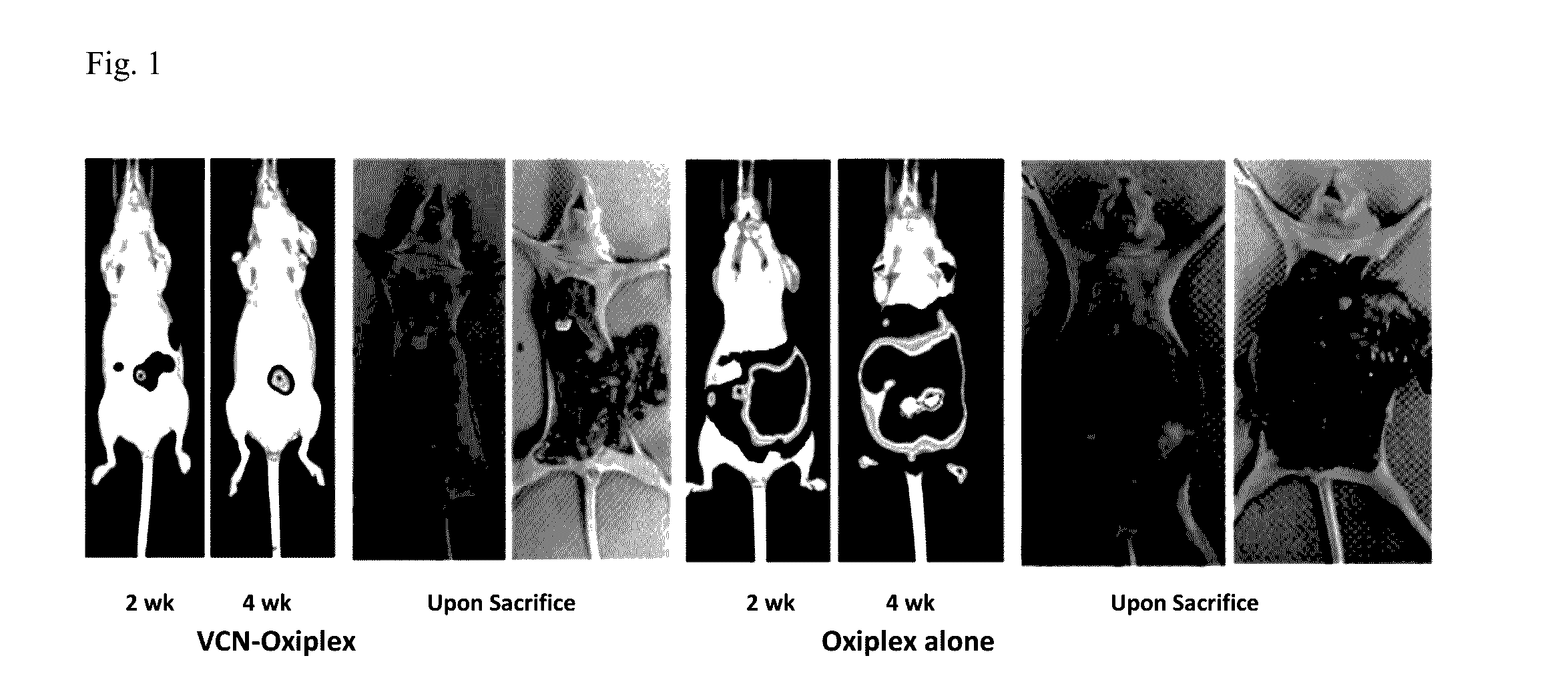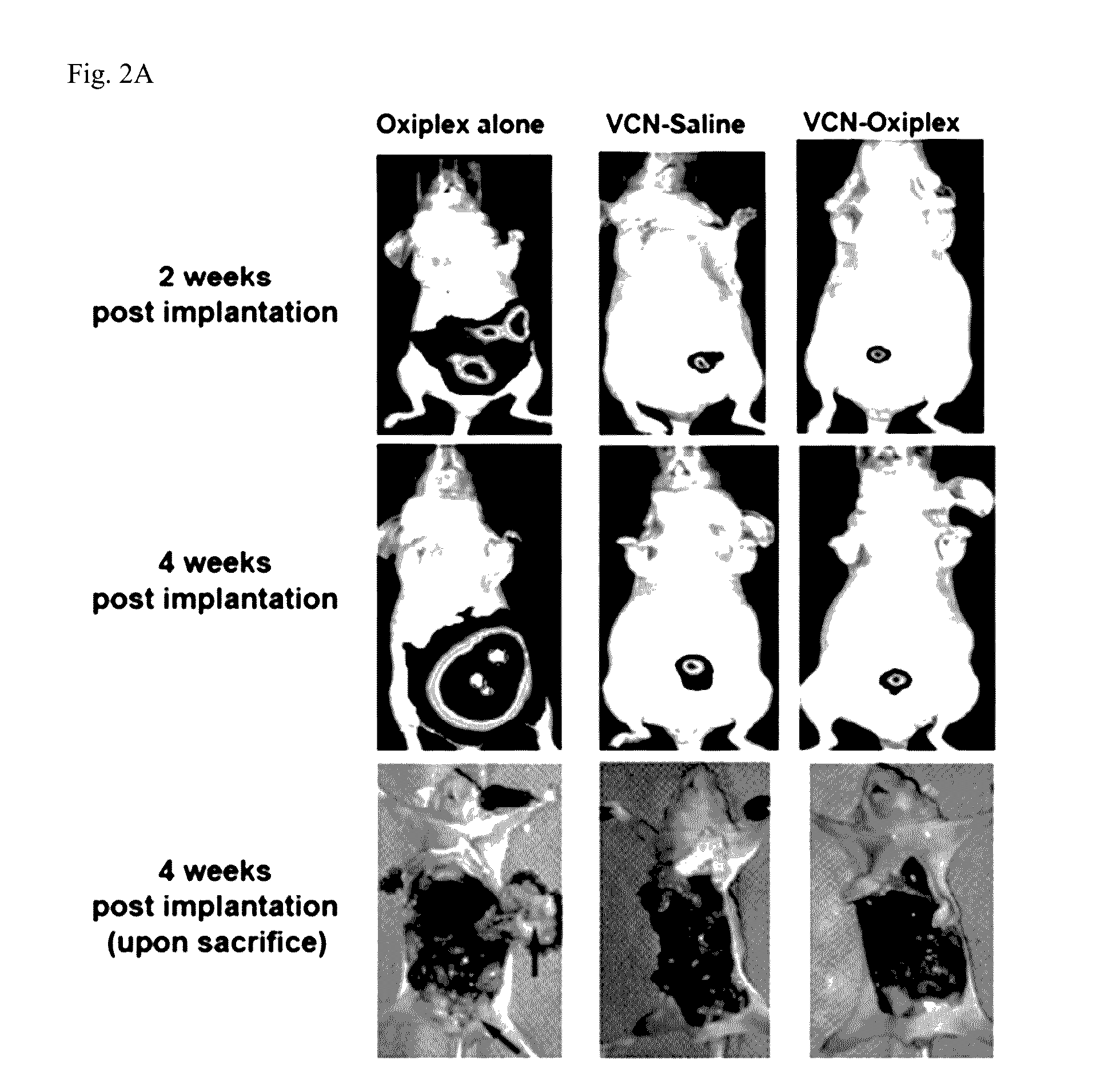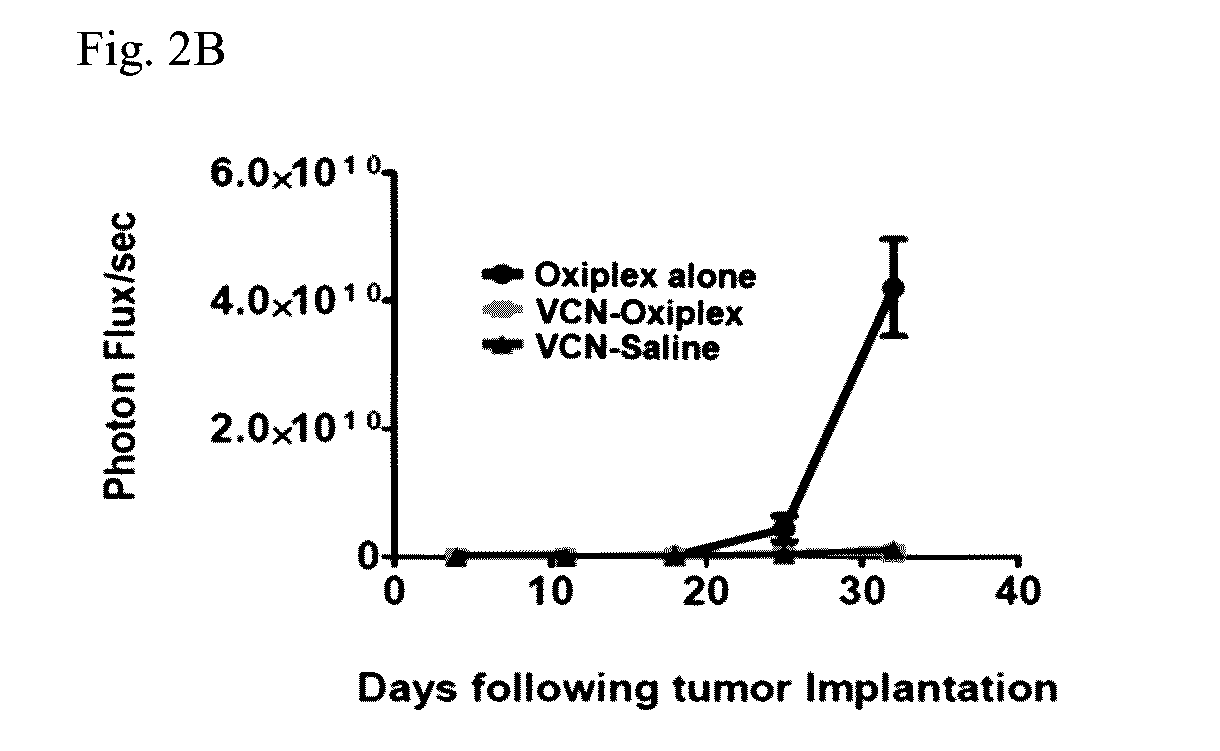Compositions and methods for treating ovarian cancer including preventing the recurrence thereof
a technology for ovarian cancer and chemotherapy, applied in the field of chemotherapy and chemotherapy, can solve the problems of volociximab not showing volociximab failed to show clinical efficacy in advanced oc, and current use of ip platinum and taxane agents are accompanied by dramatic off-target effects, and achieves high level of direct peritoneal exposure, prolonging drug delivery, and preventing recurren
- Summary
- Abstract
- Description
- Claims
- Application Information
AI Technical Summary
Benefits of technology
Problems solved by technology
Method used
Image
Examples
example 1
Preparation of VCN-Impregnated Viscoelastic Gels
[0088]Formulations of VCN-impregnated Oxiplex gels for in vitro evaluation of VCN release were prepared and evaluated. In these experiments, identical volumes of Oxiplex (1 ml) impregnated with 1, 3 or 10 mg / ml VCN were used and it was determined that the release kinetics varied inversely proportional with drug concentration (i.e., 10 mg / ml being the slowest). For these experiments, a very small volume of VCN ([0089]1. The desired amount of VCN is lyophilized and resuspended in a volume ([0090]2. The VCN is placed in a syringe (5 ml or greater to prepare 5 ml of gel) and attached through a pass through syringe coupler to a syringe of equal or greater size containing Oxiplex.[0091]3. The contents of the syringes are mixed by moving the Oxiplex gel into the syringe containing VCN back and forth a minimum of 25 times to ensure a homogenous suspension.[0092]4. The material is then moved to one of the two syringes and is ready for administr...
example 2
Release Kinetics of VCN from Oxiplex
[0093]A number of formulations of VCN-impregnated Oxiplex gels were prepared and tested for in vitro evaluation of VCN release. In these studies, identical volumes of Oxiplex (1 ml) impregnated with an amount of 1, 3 or 10 mg of VCN were used and it was determined that the release kinetics varied inversely proportional with drug concentration (i.e., 10 mg / ml being the slowest). For these studies, a very small volume of VCN (<50u1) of different drug concentrations was mixed with the Oxiplex, ensuring that the gel was not diluted by more than 5%. In additional studies it was found that by diluting Oxiplex with larger volumes of VCNsubst, regardless of the concentration of protein, the gels became structurally unstable and when diluted with a drug volume representing more than ˜20% volume of the gel, the gel fails to retain VCN.
[0094]Further studies involved the use of different buffers or solutions as the diluent for VCN and from these studies it wa...
example 3
Dose Response / Frequency Studies VCN-Oxiplex
[0095]In the original animal model, the NIH-OVCAR3 cell line was used. However, in subsequent studies the inventors switched to the somewhat more aggressive but also more studied SKOV3 model for which a massive amount of data was already generated and reported in the literature. Before initiating these studies, the SKOV3GFP / LUC cells stably infected with a lentivirus construct expressing a tandem of reporter genes: luciferase and GFP were prepared. Once infected, these cells were expanded and subjected to multiple rounds of FACS sorting to select for and enrich in cell populations expressing high levels of reporter genes. In parallel, a dose-response study with VCN-Oxiplex using wild-type SKOV3 cells was completed. This study helped with the understanding of the behavior of this tumor model. In these studies, the effects on tumor dissemination of 1, 2.5 and 5 mg VCN delivered weekly embedded in 1 ml Oxiplex versus Oxiplex alone were evaluat...
PUM
| Property | Measurement | Unit |
|---|---|---|
| volume | aaaaa | aaaaa |
| time | aaaaa | aaaaa |
| time | aaaaa | aaaaa |
Abstract
Description
Claims
Application Information
 Login to View More
Login to View More - R&D
- Intellectual Property
- Life Sciences
- Materials
- Tech Scout
- Unparalleled Data Quality
- Higher Quality Content
- 60% Fewer Hallucinations
Browse by: Latest US Patents, China's latest patents, Technical Efficacy Thesaurus, Application Domain, Technology Topic, Popular Technical Reports.
© 2025 PatSnap. All rights reserved.Legal|Privacy policy|Modern Slavery Act Transparency Statement|Sitemap|About US| Contact US: help@patsnap.com



